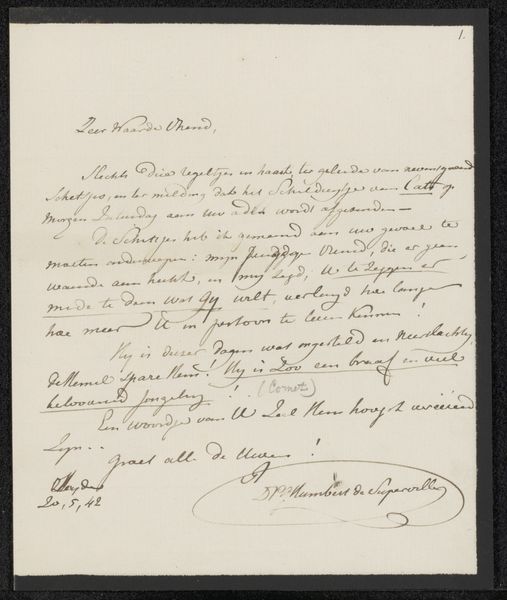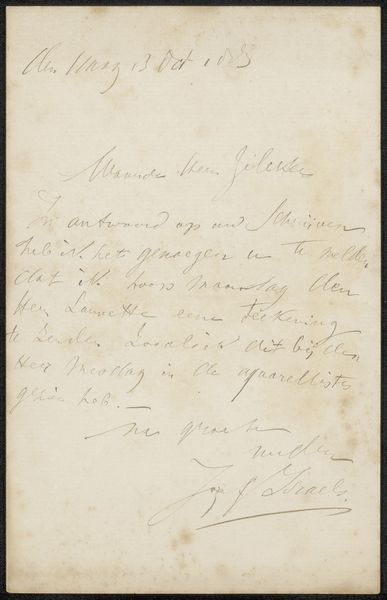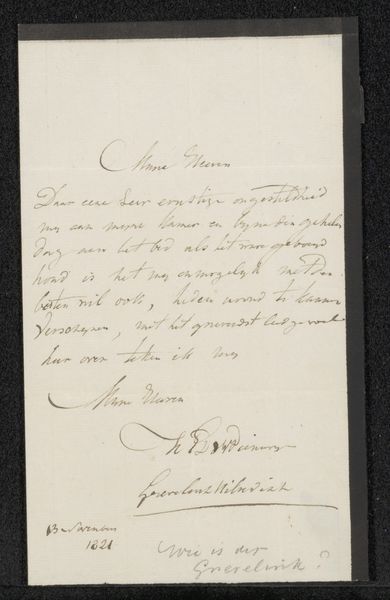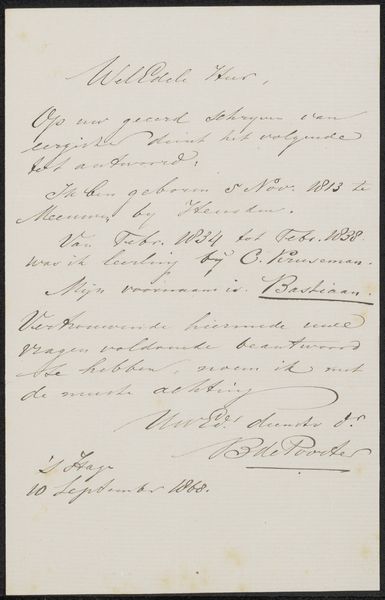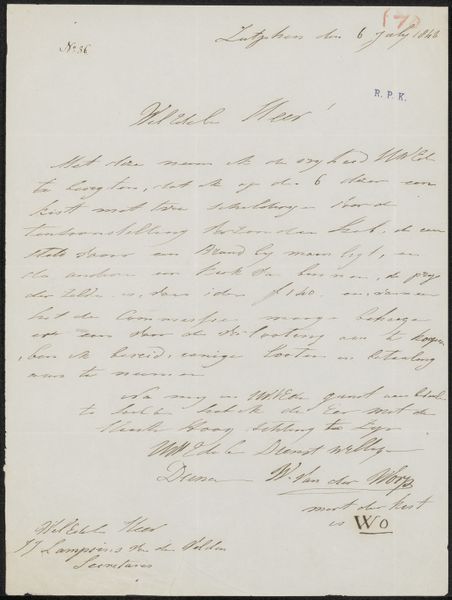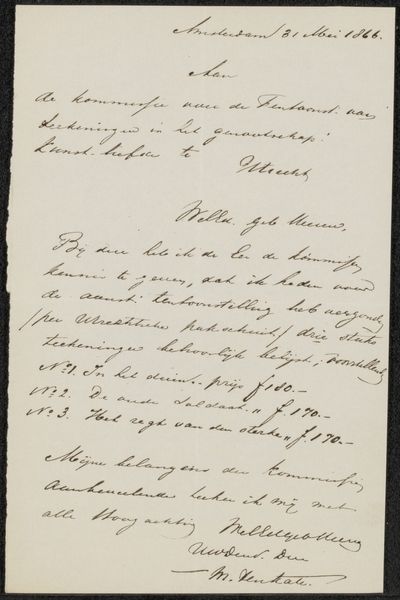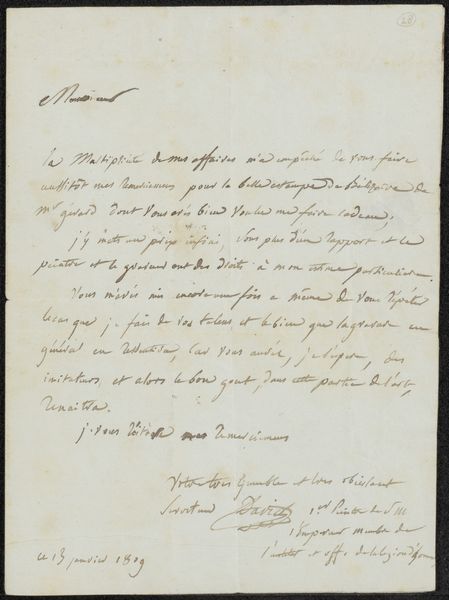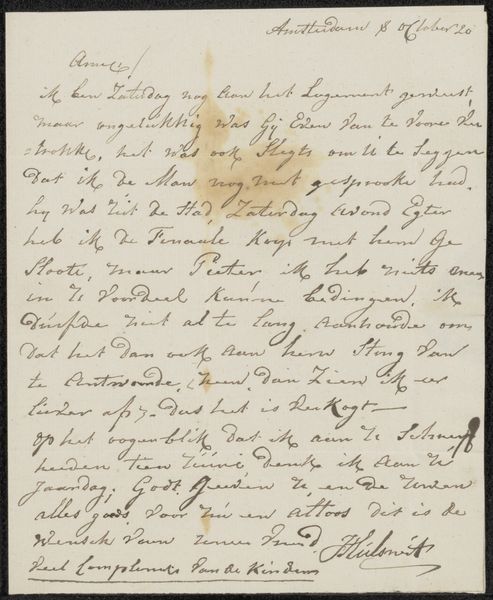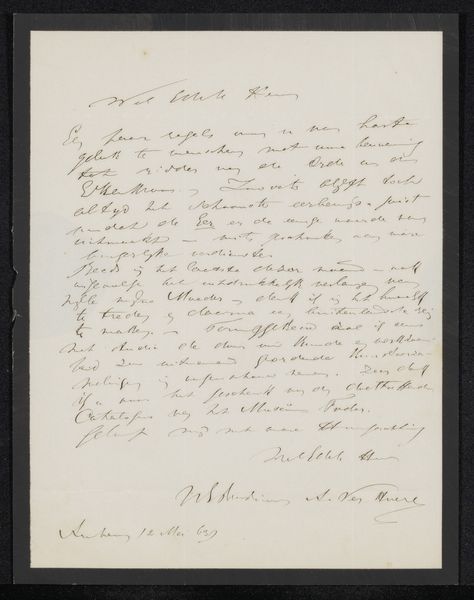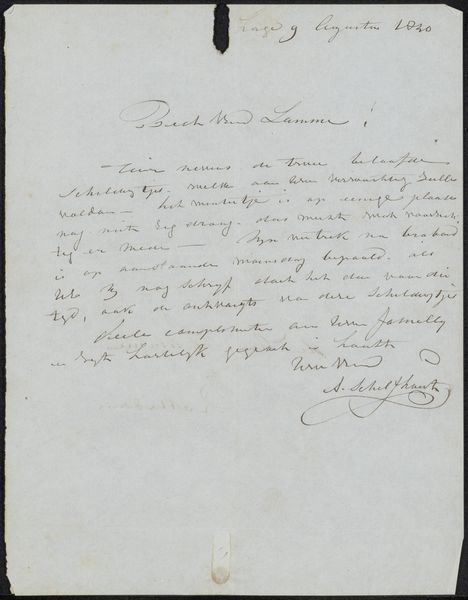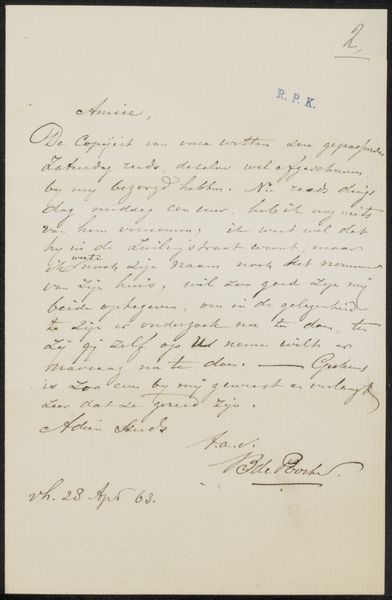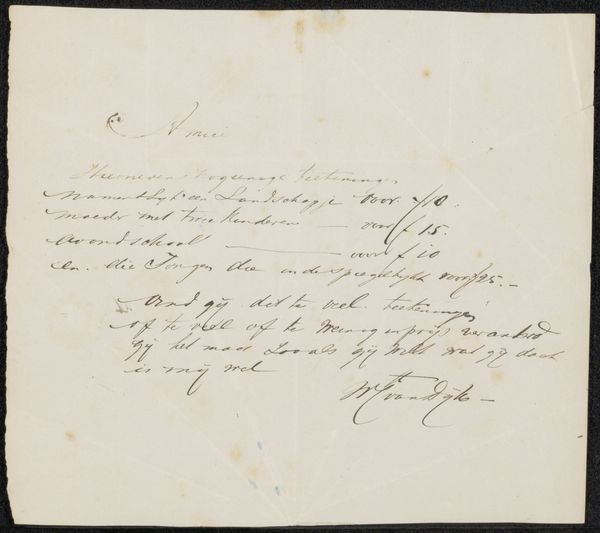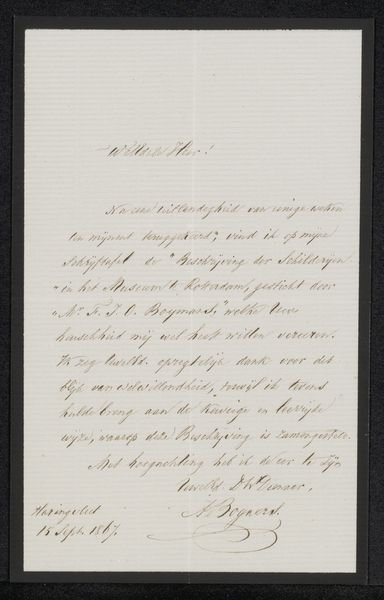
drawing, paper, ink
#
portrait
#
drawing
#
paper
#
ink
#
intimism
#
history-painting
#
calligraphy
Copyright: Rijks Museum: Open Domain
Curator: Here we have Jozef Hoevenaar’s "Brief aan anoniem," dating from between 1850 and 1926. It's an ink drawing on paper, currently held at the Rijksmuseum. The use of calligraphy elevates the work into something more than just a note; it's truly a historical document rendered artistically. Editor: It strikes me as both intimate and incredibly distant. The handwriting is beautiful, but inaccessible to many modern viewers due to its age and language. It speaks of history and secrets. Curator: The means of production here are quite straightforward, ink applied to paper, yet the artistry elevates these base materials. I am thinking about the act of writing, which would have been an important method of correspondence, storytelling, of knowledge, during this era. Hoevenaar, seemingly with access to higher quality papers and inks, situates himself among a literate class with connections that afforded him such tools. Editor: Absolutely, but beyond the tools, let's consider the social context. "Brief aan anoniem," or "Letter to Anonymous," raises questions about authorship, intended audience, and power. Why anonymous? What socio-political pressures led to that decision? What does that choice convey about the writer’s vulnerability and societal constraints? Curator: It highlights how seemingly simple acts—writing, corresponding—are inseparably intertwined with systems of labour and material production. The quality of paper and ink were reflective of one’s access to wealth. The art is both utilitarian, it's something used in life and living, but then elevated via artist and also historical relevance. Editor: It also underscores the role of written communication during an era where information flowed differently than today. The content itself is secondary, I find. It is the concept and medium which resonates more significantly in contemporary times. Curator: It serves as a tangible connection to a different time, revealing a glimpse of past society and material values. Editor: Indeed. Analyzing art in its historical context really opens up dialogues on shared experiences. It's not just about admiring a pretty script; it's about acknowledging the lives intertwined with that very letter, its creation and content, real or imagined.
Comments
No comments
Be the first to comment and join the conversation on the ultimate creative platform.
